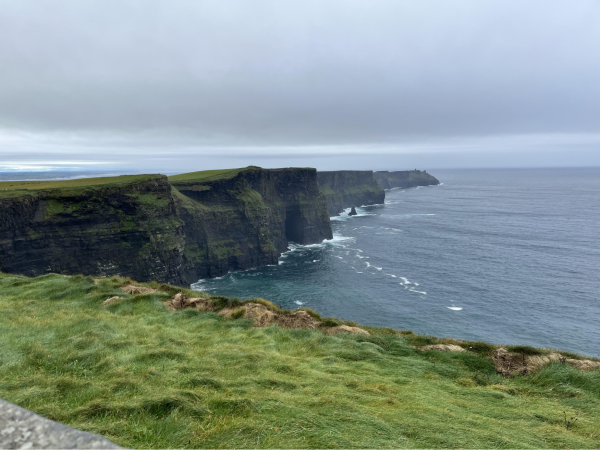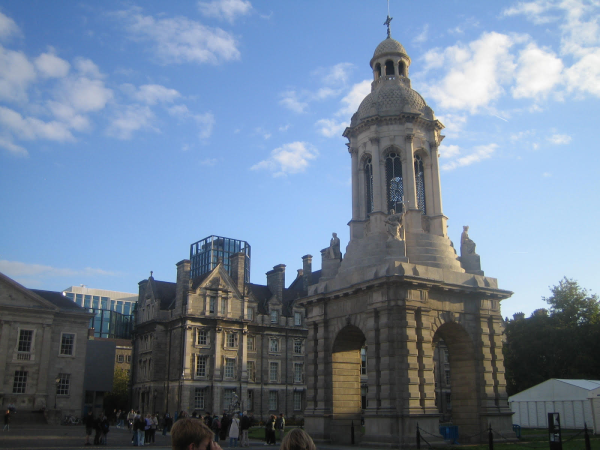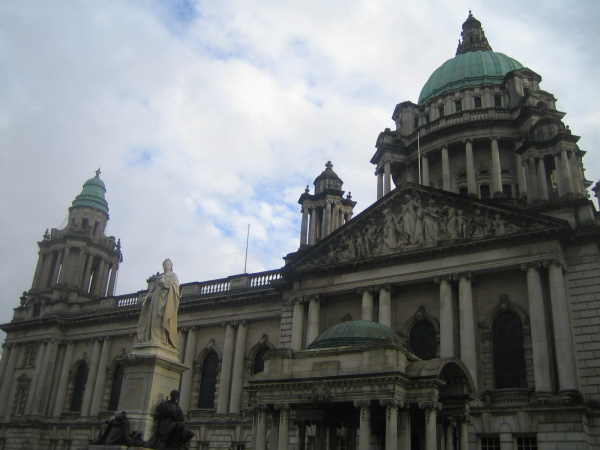
Recently I was able to experience Irish life, spending nearly two weeks in Ireland, exploring its cities and towns, learning its history and enjoying the day to day lifestyle. Through my own findings, as well as those from others, comes this explanation of the history of Ireland.
The first settlements on what is now Ireland date back millennia, with the first known civilizations starting around 6000 B.C. While there are not yet named civilizations dating back that far, the first named civilization is the Celtic peoples, who originated in Western Europe. The Celts originally travelled to Ireland somewhere between 600 B.C to 150 B.C.
The Celtic peoples have been otherwise referred to as the Gaels, the language spoken among them being known as the Gaelic language. The Celtic peoples continued their dominance over Ireland until about the 6th century A.D., when their numbers began to decrease.
It was until roughly the 8th century that the Celtic peoples kept their dominance in Ireland, when the Viking peoples began raiding villages in Ireland, traveling from Eastern Europe.
“They remained unchallenged until the late 8th century,” according to Discovering Ireland, “with the arrival of the Vikings from Scandinavia who began to raid Ireland as well as most of mainland Europe.”
While it is unclear what exact population changes occurred following the institution of Viking settlements, it is safe to say that the Vikings became the dominant group occupying Ireland, in contrast to the previous Celtic settlements.
Although the Vikings held their reign over Ireland for multiple centuries, they did not occupy Ireland nearly as long as the Celtic peoples did, with their reign coming to end shortly after the 9th century and into the 10th. Although the next known major group in Ireland is the English, the end of the Viking rule is typically overlooked.
Brian Boru, an Irishman who earned the title of the “high king of Ireland,” led the Celts to victory against the Vikings some time in the year 1014. The Celts’ major victory against the Vikings happened during the Battle of Clontarf, a battle that would reroute the future of Ireland.
As explained by Discovery Ireland, Brian led Ireland until 1014 from 1002, the time in which he earned the title of “high king of Ireland.” Now, although he earned the title of the “high king,” Ireland did not actually have a foolproof monarch system. During this time, most of mainland Europe had been building these same systems, however Ireland lacked the proper party system to run a functional monarchy.
Even though Ireland could not form such a government system as other areas had by then, it is safe to say that Ireland was still able to function as if they did. Ireland would continue to run in such a way until the English would formally overtake the country.
Although small English groups had taken areas of Ireland already, it was in 1171 that Henry II traveled to Ireland, with the goal of seizing all of Ireland. Now, because of these small English areas already existing upon his arrival, it made creating English-based governments easier. What was not expected, however, is the eventual outcome of those governing systems.

Shortly after these systems went into effect, it proved to be difficult to hold Ireland in a monarchy such as that of England. Even though this did not work, that did not stop the English from their goal of ruling over Ireland.
For years and years, the English would impose new systems over Ireland, molding the country to be like that of England, with the biggest and most impactful being known as the “Plantation System,” a system that would further boost the position of English rulers.
“But it’d essentially make the original inhabitants of Ireland where they couldn’t own land and they didn’t really have property, which means they had no way to gain wealth,” U.S. History teacher Daniel Ferrel said. “So they kept them poor and out of positions of power, and all those positions of power went to people who were loyal to the English.”
English rule would continue for hundreds of years, however it was in the 16th century under King Henry VIII that the English rule over Ireland would soon begin to slowly fade away and would continue to do so for centuries to come.
With the dissolution of English systems in various areas of Ireland, the difference between Catholics and Protestants began to change almost immediately, with the Protestant population rising once more as the Catholic English left Ireland.
As a result of failing systems, certain English areas only pressed harder against those living in Ireland at the time. It was because of this that tensions between Catholics and Protestants really began to rise, aside from the already tense relationship.
As the English rule continued for years and years, their next big blow would be during the Great Potato Famine, a four-year period that would infect nearly all of the potatoes in Ireland from a disease called blight. The famine would kill millions and force nearly as many out of the country.
Referring once more to Discovery Ireland, we can read that with most of the potatoes in Ireland at this time being infected, finding good potatoes became so much more rare. At this point, Ireland was still under English rule, so most potatoes that did survive went to those English in higher positions of power and were even shipped out of Ireland instead of going to the citizens in the country.
While these decisions by the English are looked back upon harrowingly, many believe that the English could have done more to prevent the effect the famine had on Ireland’s population, most likely changing the effects it would have had on the country in the end. However, it was seemingly just not possible.
“They didn’t do anything,” AP Human Geography teacher Sarah Ray said. “And so there really wasn’t anything they could do, because I’m pretty sure anything that they would have planted would have been harmed.”

Nearing what would be the end of the famine was the establishment of soup kitchens, with the intent of eventually re-gaining the lost Irish population. New jobs were also created for food production by those who thought it would encourage citizens to work, since it meant more food in the end.
Following the famine, disputes between the Catholics and Protestants would continue, with both competing for political power and dominance in the Irish government. Looking again to Discovery Ireland’s detailing of Irish history, we end up at The Home Rule Act, an act that guaranteed Catholic majority in government, which seemingly blew the top off on this conflict before it eventually reached its peak.
In 1916, Irish rebels known as the Irish Republican Army (IRA) gathered in what is now known as the 1916 Easter Rising. Although this day did not create change in the Irish government, it did tip the first domino for what would eventually result in Irish independence.
In 1922, Ireland officially gained its independence, separate from Northern Ireland. Today, Northern Ireland is still a part of the United Kingdom (U.K.), separate from Southern Ireland, which to this day holds its independence from the U.K.







